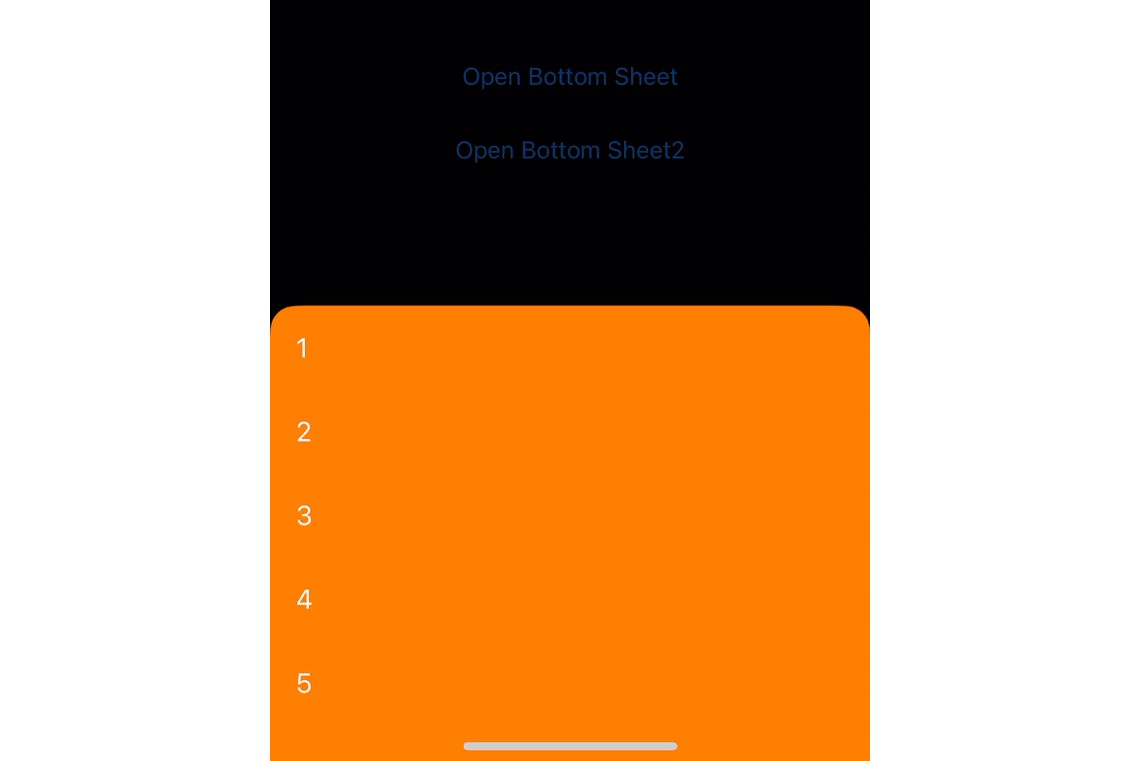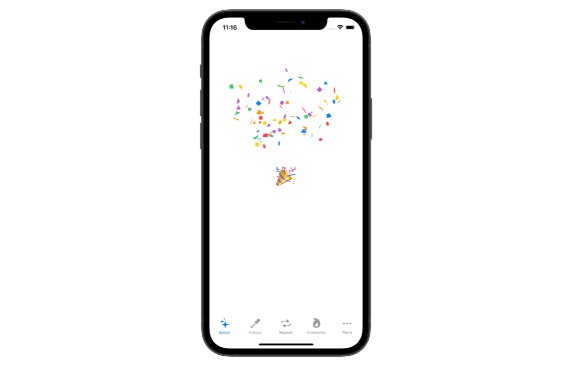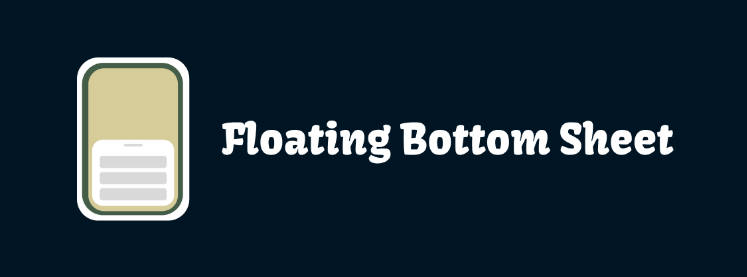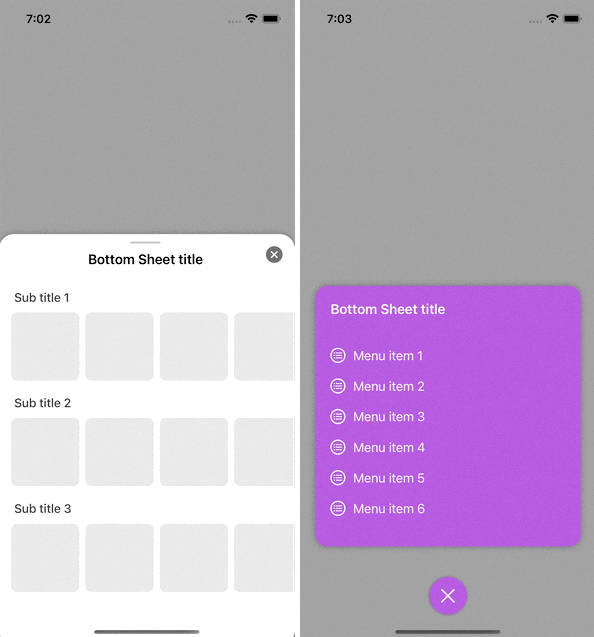DynamicBottomSheet
Powerd by Witi Corp., Seoul, South Korea.
Fully Customizable Dynamic Bottom Sheet Library for iOS.
This library doesn’t support storyboards.
However, you can easily override variables in DynamicBottomSheetViewController and make the bottom sheet programmatically.
Preview
Requirements
-
Swift 5
-
iOS 10.0 +
-
RxSwift 6.0
-
RxCocoa 6.0
-
RxGesture 4.0
-
SnapKit 5.0
-
Then 2.0
Installation
CocoaPods
DynamicBottomSheet is available through CocoaPods. To install
it, simply add the following line to your Podfile:
pod 'DynamicBottomSheet'
$ pod install
Swift Package Manager(SPM)
In Xcode, add as Swift package with this URL: https://github.com/Witi-Official/DynamicBottomSheet
Usage
-
Import
DynamicBottomSheeton top of your view controller file. -
Create a class for the bottom sheet where its super class is
DynamicBottomSheetViewController. -
Put the view you want to show in the
contentViewof the super classDynamicBottomSheetViewController. -
Make
constraints of the view you madeto thecontentViewabove. -
Present the bottom sheet view controlleryou made before in another view controller.
Example
For more examples, clone the repo, and run pod install from the Example directory.
import UIKit
import DynamicBottomSheet
import SnapKit
import Then
class MyStackViewBottomSheetViewController: DynamicBottomSheetViewController {
// MARK: - Private Properties
private let stackView = UIStackView()
.then {
$0.axis = .vertical
$0.spacing = 32
$0.alignment = .fill
$0.distribution = .fillEqually
}
}
// MARK: - Layout
extension MyStackViewBottomSheetViewController {
override func configureView() {
super.configureView()
layoutStackView()
}
private func layoutStackView() {
contentView.addSubview(stackView)
stackView.snp.makeConstraints {
$0.top.equalToSuperview().offset(16)
$0.leading.equalToSuperview().offset(16)
$0.trailing.equalToSuperview().offset(-16)
$0.bottom.equalTo(view.safeAreaLayoutGuide).offset(-16)
}
Array(1...5).forEach {
let label = UILabel()
label.text = "\($0)"
stackView.addArrangedSubview(label)
}
}
}
import UIKit
class ViewController: UIViewController {
override func viewDidLoad() {
super.viewDidLoad()
let bottomSheet = MyStackViewBottomSheetViewController()
DispatchQueue.main.async {
self.present(bottomSheet)
}
}
}
Customization
/// The background color of the view controller below the content view.
///
/// - `UIColor.black.withAlphaComponent(0.6)` for others.
open var backgroundColor: UIColor
/// Background view
open var backgroundView: UIView
/// The background color of the content view.
///
/// Default value
/// - `UIColor.tertiarySystemBackground` for iOS 13 or later.
/// - `UIColor.white` for others.
open var contentViewBackgroundColor: UIColor
/// The height of the content view.
///
/// Default value is `nil`
///
/// If you set this value explicitly, the height of the content view will be fixed.
open var height: CGFloat?
/// Content view
open var contentView: UIView
/// Corner radius of the content view(top left, top right)
///
/// Default value is `16.0`
open var contentViewCornerRadius: CGFloat
/// Present / Dismiss transition duration
///
/// Default value is 0.3
open var transitionDuration: CGFloat
/// Dismiss velocity threshold
///
/// Default value is 500
open var dismissVelocityThreshold: CGFloat
Author
Aaron Lee at Witi Corp., [email protected]
License
DynamicBottomSheet is available under the MIT license. See the LICENSE file for more info.












